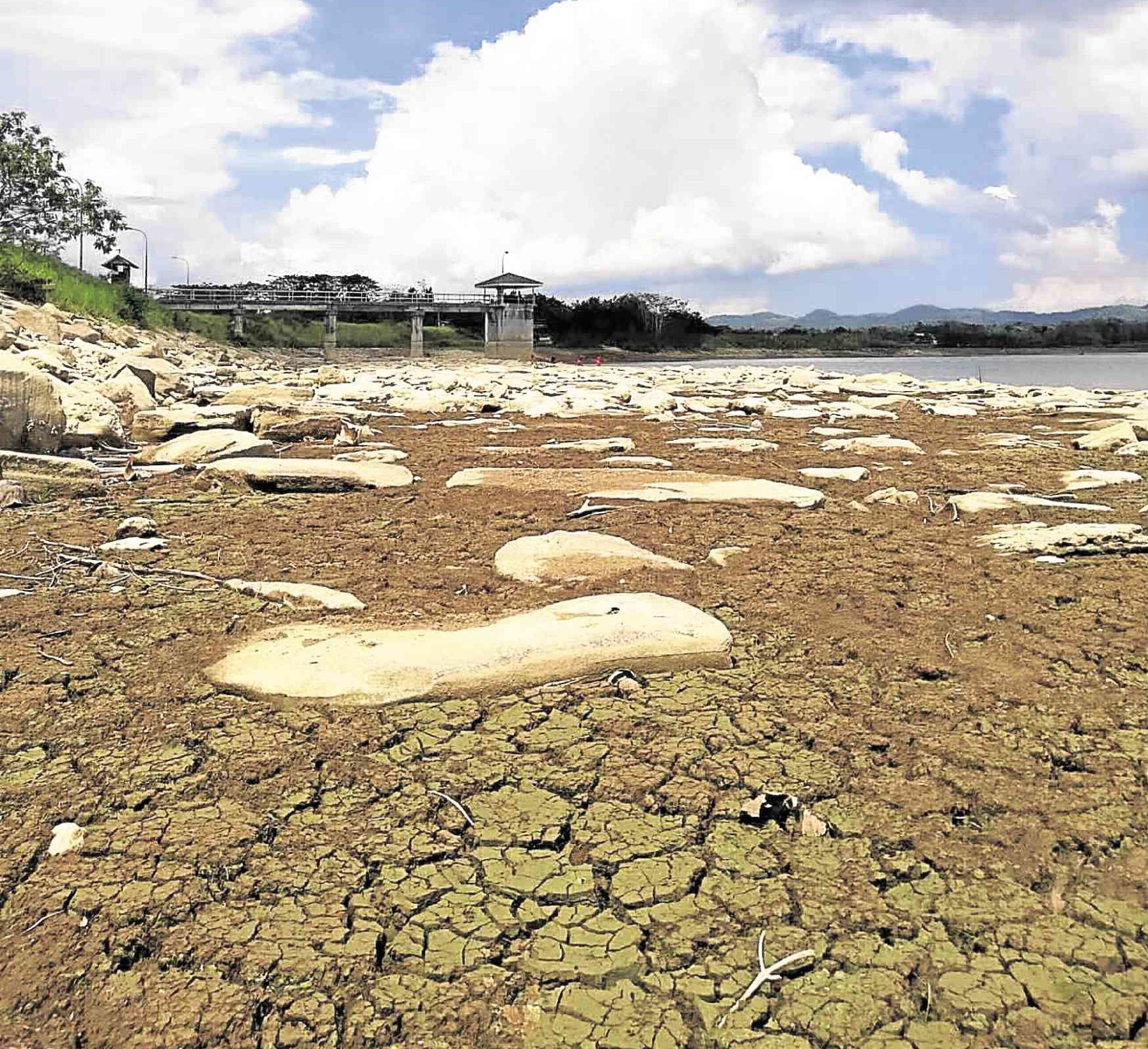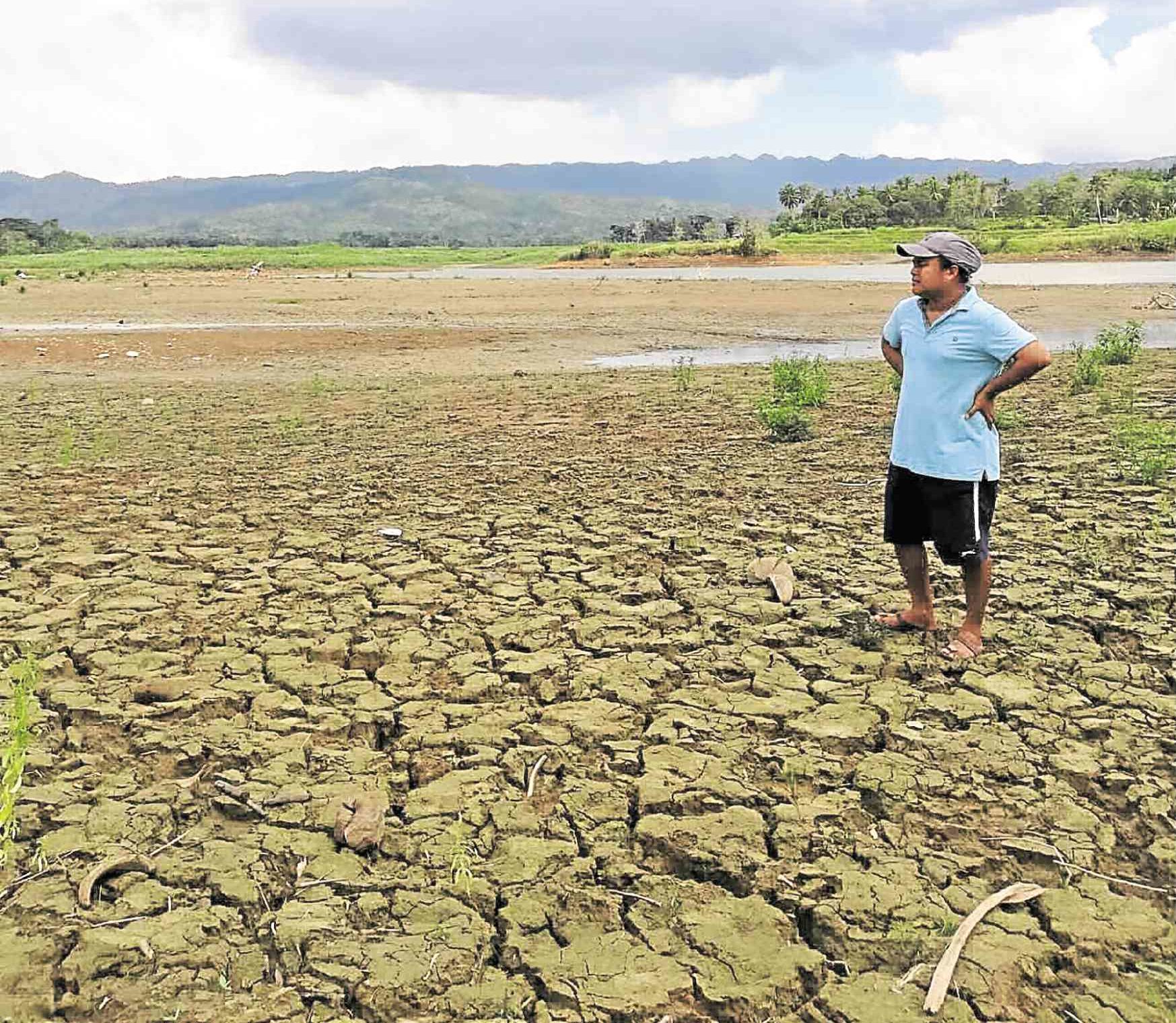In Bohol, farmers pray for rains as water supply dwindles

IRRIGATION WATER Water level at Malinao Dam in Pilar town, Bohol, recedes due to the absence of rain in the province. The dam supplies irrigation water to nearby farms.—LEO UDTOHAN
TAGBILARAN CITY—Farmer Zosimo Perocho of Pilar town in Bohol province has been praying for rain for days.
Perocho, 60, was worried that the lack of rainwater would eventually kill his palay (unhusked rice) seedlings that had started to turn yellow.
“If there is no rain, our crops will be wasted,” he said.
Perocho said palay seedlings were turning yellowish as their fields started to dry up.
This worries Perocho as he fears a poor harvest in October. Last year, his small farm yielded 80 sacks of rice due to relatively good weather conditions.
Rice bowl
Farmers have been complaining of lack of rain that has affected at least 6,000 hectares of rice fields in Bohol province, considered the rice bowl of Central Visayas.
“We experienced scattered rainfall [this August], but the [rain volume] was still below normal. It [was not enough] to soak [the farmers’ paddies] to give them confidence that they would have a good harvest,” said acting provincial agriculturist, Larry Pamugas.
He said water levels in four irrigation dams—Malinao in Pilar town, Bayongan in San Miguel town, Capayas in Ubay town and Zamora in Talibon town—had started to drop and were nearing the critical mark.
Malinao Dam, the biggest of the four facilities, supplies water to 4,740 ha of rice fields in the towns Pilar, Ubay, San Miguel, Dagohoy and Alicia, while Capayas Dam provides water to 1,160 ha in Ubay.
Pamugas said businesses related to livestock and poultry raising and aquaculture were also reeling from the absence of rains.

PARCHED A farmer surveys his parched rice farm in Bohol.—LEO UDTOHAN
Cloud seeding
Pamugas said cloud seeding could still save the crops, especially those in the vegetative stage.
He said the government, in 2016, resorted to cloud seeding to bring relief to drought-stricken areas and reduce crop damage.
The provincial agriculture office had requested P2.5 million to fund a 42-hour cloud-seeding operation.
Pamugas said cloud seeding was aimed at increasing water levels of the four dams, small water impounding projects, and small farm reservoirs in Bohol.
Alarm
Of at least 47,000 ha of rice farms in Bohol, 24,000 ha are irrigated through dams, small water catchments and diversionary canals. The rest rely on rains.
Pamugas said reports from municipal agriculturists showed that the towns of Pilar, Sierra Bullones, Talibon, Ubay, Mabini and Candijay were heavily affected by the drought.
Pamugas raised the alarm on the dry spell as early as February, and ordered local disaster councils to prepare for its impact on food security, public health, and water and power supplies.














